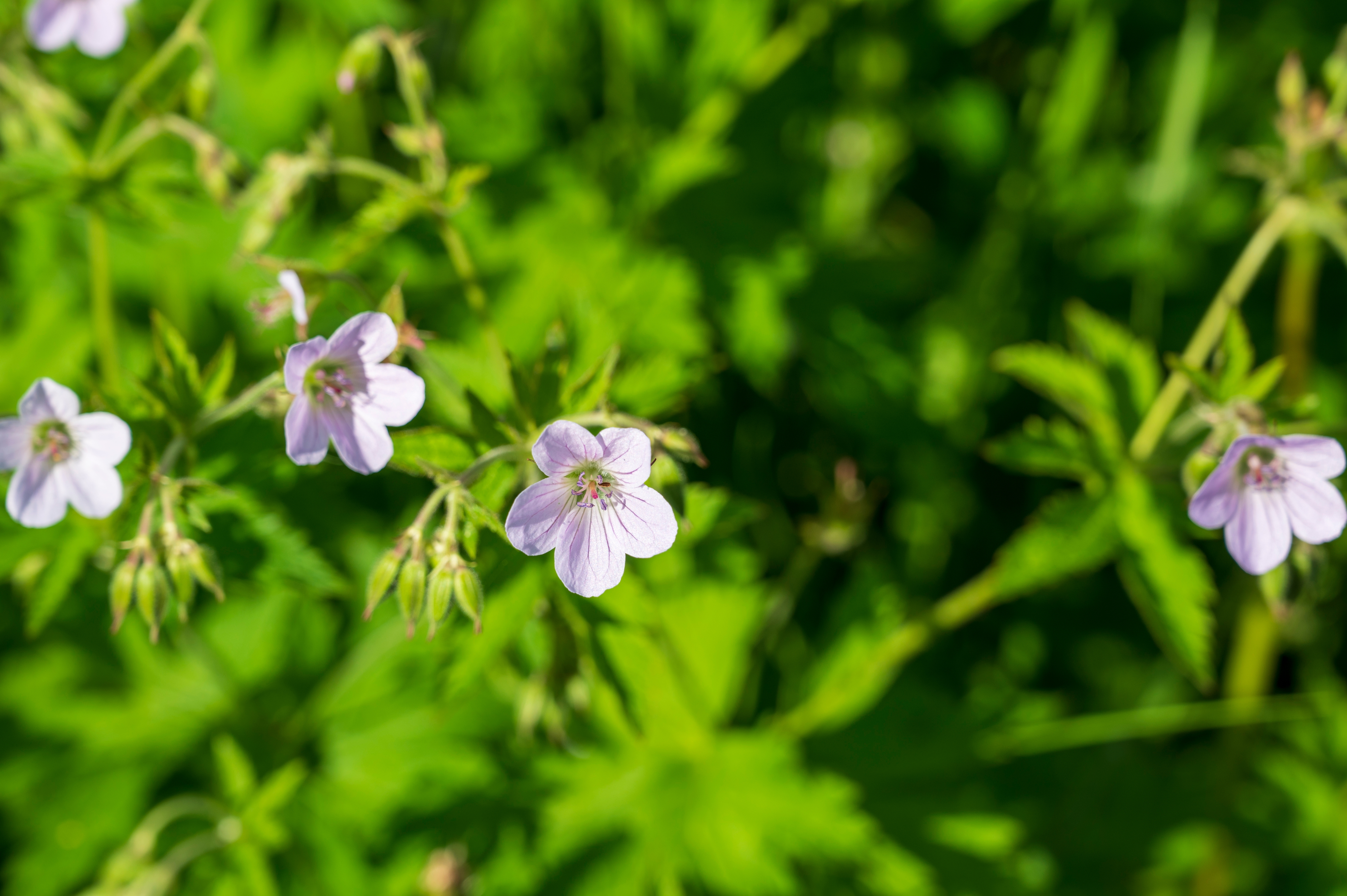Bicknell's cranesbill
(Geranium bicknellii)

Description
Geranium bicknellii, commonly known as Bicknell's Cranesbill or Bicknell's Geranium, is a herbaceous perennial plant belonging to the Geraniaceae family. This North American native species is widely distributed throughout the United States and Canada, with a preference for wooded areas, grasslands, and other open spaces. In this article, we will delve into the botanical description, distribution, habitat, ecology, cultivation, and conservation status of this fascinating plant. Botanical Description A. Morphology Geranium bicknellii is a perennial plant that typically grows between 30-70 cm (12-28 inches) tall. Its stems are branched, pubescent (hairy), and sometimes reddish in color. The leaves are alternate, palmately lobed, and pinnatifid, with five to nine lobes. The base of the leaf is cordate (heart-shaped), while the margins are serrate (toothed). The leaves can range in size from 3 to 12 cm (1.2-4.7 inches) in length and 2 to 10 cm (0.8-3.9 inches) in width. B. Inflorescence The flowers of Geranium bicknellii appear solitarily or in pairs in the leaf axils. The inflorescence is cymose, with pedicels ranging from 1 to 3 cm (0.4-1.2 inches) long. The flowers have five sepals, five petals, ten stamens, and a central pistil with a superior ovary. The petals are pink to purple in color, with darker veins, and are approximately 1 to 2 cm (0.4-0.8 inches) long. The sepals are lanceolate (lance-shaped) and pubescent. C. Fruits The fruit of Geranium bicknellii is a schizocarp, which splits into five mericarps (seed-containing segments) when mature. Each mericarp has a long, beak-like structure called an awn, which is 2 to 3 cm (0.8-1.2 inches) long. The awns are hygroscopic (moisture-sensitive), enabling them to coil and uncoil in response to changes in humidity, thereby facilitating seed dispersal. Distribution and Habitat Geranium bicknellii is native to North America, predominantly found in the United States and Canada. Its range stretches from Alaska, across Canada, and down through the eastern United States to the Appalachian Mountains. It is also found in scattered populations in the western United States. This species thrives in a variety of habitats, such as meadows, grasslands, open woodlands, roadsides, and clearings. It prefers well-drained soils and can tolerate a range of soil types, including sandy, loamy, and clayey soils. Geranium bicknellii is typically found at elevations between 0 and 2,500 meters (0-8,200 feet). Ecology Geranium bicknellii, like other geranium species, is a valuable component of its native ecosystems. Its nectar-rich flowers attract a variety of pollinators, including bees, butterflies, and other insects. In turn, the seeds of the plant serve as a food source for birds and small mammals. The plant's foliage also provides habitat for various insects and other small organisms. Cultivation Although Geranium bicknellii is not commonly cultivated as an ornamental plant, it is a low-maintenance and adaptable species that can be grown in gardens and naturalized landscapes. Here are some guidelines for cultivating Bicknell's Cranesbill: A. Propagation Seeds: Geranium bicknellii can be propagated from seeds, which should be sown in the spring or fall. The seeds require a period of cold stratification (exposure to cold temperatures) for 3-4 weeks prior to sowing. This can be achieved by placing the seeds in a moistened medium, such as vermiculite or peat moss, and storing them in a refrigerator. Division: Mature clumps of Geranium bicknellii can be divided in the spring or fall. Carefully dig up the plant, ensuring that the root system remains intact, and gently separate the individual crowns. Replant the divisions at least 30 cm (12 inches) apart to allow for proper growth. B. Growing Conditions Soil: Geranium bicknellii prefers well-drained soils and can tolerate a wide range of soil types, including sandy, loamy, and clayey soils. It is moderately tolerant of acidic to alkaline conditions, with a preferred pH range of 5.5-7.5. Light: This species grows well in full sun to partial shade, but optimal flowering occurs in locations with abundant sunlight. Water: While Geranium bicknellii is somewhat drought-tolerant, it benefits from regular watering, particularly during extended dry periods. Be careful not to overwater, as this can lead to root rot. Fertilizer: Fertilization is generally not necessary for Geranium bicknellii, but a balanced slow-release fertilizer can be applied in the spring if desired. C. Maintenance Geranium bicknellii requires minimal maintenance. Deadheading (removing spent flowers) can encourage further blooming and prevent self-seeding, which may become invasive in some areas. Pruning back the foliage in the fall can help to maintain a tidy appearance and promote healthy growth in the following season. Conservation Status Geranium bicknellii is not currently listed as a threatened or endangered species. However, like all native plants, it plays an essential role in maintaining the health and diversity of its native ecosystems. Preserving and restoring habitats that support Geranium bicknellii and other native species is crucial for the conservation of biodiversity and the overall health of our environment. Conclusion Geranium bicknellii, with its delicate pink to purple flowers and intricate leaf morphology, is a fascinating and adaptable North American native plant. Its ecological importance, as well as its potential for use in naturalized gardens, makes this species a valuable addition to any plant enthusiast's knowledge base. By understanding and appreciating the unique characteristics of Geranium bicknellii, we can help to promote its conservation and encourage the use of native plants in our landscapes.
Taxonomic tree:







